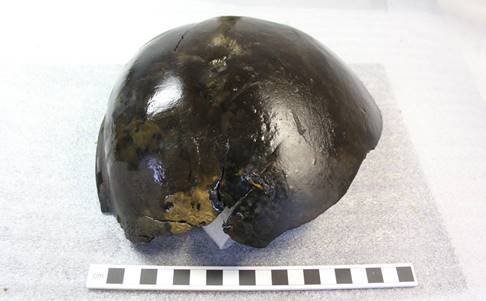Ancient repairs to a perfectly preserved Iron Age wooden bowl from a 2,000-year-old well in Orkney have amazed experts.
The remarkable find was made during conservation work being undertaken on the well this week.
Discovered at The Cairns Broch archaeology site, it has an extraordinary story to tell of ancient repair suggesting it was a valued object during the Iron Age.
>> Keep up to date with the latest news with The P&J newsletter
Earlier this year, a team of archaeologists from the University of the Highlands and Islands Archaeology Institute, based in Orkney, excavated an underground chamber beneath the floor of an Iron Age broch on South Ronaldsay.
Now, on-going conservation work on a water-logged deposit, recovered from inside the underground chamber beneath the broch, has afforded an exceptionally rare glimpse of a well-preserved, 2,000-year-old, wooden bowl.
The nature of the bowl, and the details emerging about its life story, may help archaeologists to better understand the enigma of such subterranean chambers, leading to a fuller appreciation of their complex role within Iron Age communities.
The first stage of the conservation work was completed this week, as specialist conservators at AOC Archaeology, based in Edinburgh, have now patiently “micro-excavated” the bowl from its protective soil block. The work offers a clear view of the object for the first time in about 2,000 years.
The bowl had been skilfully hand carved from a half-log of an alder tree. Tool marks are visible in the interior, but the exterior has been finely burnished.
On one of its broken edges a series of about 16 strange looking wiggly strips of bronze can be made out. Beyond these, a further small straight bronze strip runs across the break and is an ancient bracket or staple. The staple and the rivets represent a very artful ancient repair, or repairs, made to the vessel to prolong its life.
Martin Carruthers, Lecturer in Archaeology at the UHI Archaeology Institute, Orkney College and director of The Cairns project, said: “After first encountering the bowl this summer, we had wondered if wooden bowls, and other objects made from wood, might actually have been much more common than we would have previously expected for the mostly treeless environment of Iron Age Orkney. Perhaps archaeologists have been guilty of overplaying the scarcity of wood in Scotland’s Northern Isles.”
Dr Anne Crone, a specialist in ancient wooden artefacts with AOC Archaeology, said: “The rarity of wooden vessels in Orkney could be why they went to such lengths to repair what is a quite beautiful object.”










